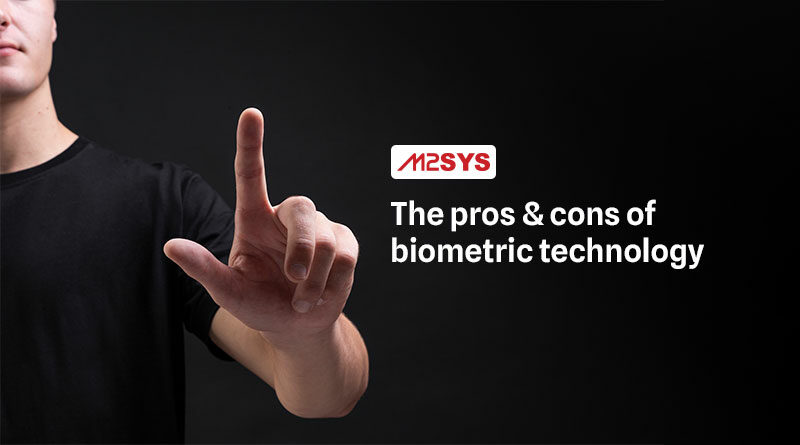Biometric Technology Pros and Cons Explained
The pros and cons of biometric technology are like two sides of the same coin. There are many debates about whether or not we should use the technology, yet biometric technology has advanced dramatically in the last few decades. Biometrics are observable human characteristics, traits, or behaviors that are used to verify someone’s identity. The purpose of this article is to describe the pros and cons of biometric technology.
About Biometric technology
Biometric technologies refer to technology that uses a biological trait to identify a person. Fingerprint recognition was one of the first and most widely used biometric technologies in a variety of industries. With the widespread use of video surveillance cameras in large cities, the data collected by these cameras have become a lightning rod for privacy and human rights concerns. Face recognition as a means of recognizing potential threats, particularly in crowded areas, has been highly debated since the terrorist attacks on September 11, 2001. Complex algorithms and cloud infrastructure are running in the background, even if the technology appears to be simple.
Biometric technology pros and cons
Businesses can benefit from biometrics since they improve security and user experience. However, if companies want to use them to authenticate employees or end-users, they raise new issues that need to be addressed. We’ll start by looking at some of the pros of using biometric technology.
Biometric technology pros
As we previously stated, there are two sides to every coin, and biometric technology is no exception. Biometric technology has some very tangible benefits, which is why millions of individuals all over the world use it. Here are a few notable examples:
1. Better than passwords:
Passwords using numbers, alphabets, symbols, and other characters are becoming increasingly difficult to crack. Every year, tens of thousands of hacking incidents occur, and yet we continue to lose money. Biometric technology provides a number of options that, unlike passwords, are virtually impossible to decipher. This is advantageous to us, particularly for business owners who have long dealt with security issues.
2. Fail-proof:
Existing security solutions routinely fail, resulting in significant time, effort, and asset waste. The most common security measures are passwords, personal identification numbers (PINs), and smart cards. They are, however, not always correct. Biometrics, on the other hand, leverages your physical traits, such as fingerprints, palm veins, and retina, among others, to offer you accurate service at any time and from any location.
3. Can’t forget:
Consider how frequently you’ve forgotten your passwords; it’s a stressful scenario, isn’t it? You’re not on your own. We’ve all been there: it’s difficult to remember or write down every password, and we’re more likely to forget it in a rush. Numerous useful tools are available to assist you, but none compare to the convenience of biometric solutions, which are the most convenient option available. Since your credentials are permanent, you don’t need to memorize or write anything down.
4. Highly scalable:
Unlike other technologies, biometrics are highly scalable solutions for a wide range of tasks. Biometric technologies are used in a variety of government initiatives, financial security systems, labor-management systems, and other applications. Because it is feasible and its solutions are scalable.
5. Better return on investment:
Biometric solutions will give you the highest return on investment when compared to other security systems. A large firm can maintain track of thousands of employees with only one biometric device and software. On the other hand, to do the same operation, you’d have to manage a large team, which would take longer than employing biometric technology.
Biometric technology cons
When it comes to biometric technology, it’s not always sunshine and rainbows. While the introduction of Biometrics provided various benefits, it also introduced a plethora of problems. Some of the major ones are listed below:
1, Complex system:
The extremely technical and complex technology that underpins the entire system is one of the most important downsides of Biometrics. A non-technical person will flounder like a fish out of water when it comes to understanding the system. Companies employ highly experienced and qualified programmers to build the system, which needs the hiring of programmers to manage it.
2. Insanitary:
Biometric modalities are available in a wide range of shapes and sizes. Some are contact-based, such as fingerprint and palm vein scanners, while others, such as iris and facial recognition, are contactless. Many people use contact-based biometric devices trillions of times in contact-based modalities. Everyone is spreading their germs via the device. You never know what you’ll take with you after putting your finger on the device. You wouldn’t be able to change anything about the system.
3. Physical incapacity:
Some people are unable to participate in the enrollment process due to a variety of factors. They may have lost or been wounded in bodily parts such as fingers or eyes. Using fingerprint/iris recognition technology to identify someone in this situation would be humiliating and disrespectful. These people will have a tough time interacting with others in the system.
4. Environment settings:
The comprehensive data collected may be influenced by the environment and usage. In icy areas, the error rate is higher, causing unnecessary turbulence and dissatisfaction across the technology.
5. Scanning error:
Some biometric modalities, such as iris scanning, may have detection problems. It happens for a variety of reasons, including brows, eyelids, lenses, and corneal reflections. Fingerprint scanning can be hindered by a dry finger.
The potential of biometric technology should not be underestimated due to a few factors. We hope that as technology advances, these issues will be resolved and that we will have hassle-free biometric technology for everyday use in the future.












I really don’t find any major cons of biometric as it. I know that there are tons of debate against the use of biometric but I do not see any legit ground on their climes. There are always two sides of a coin and I really hope that people stay on the right side while using biometrics.